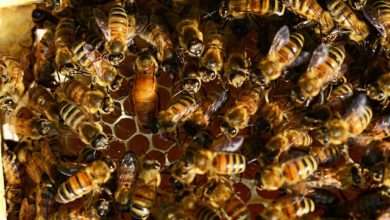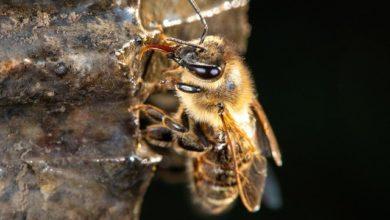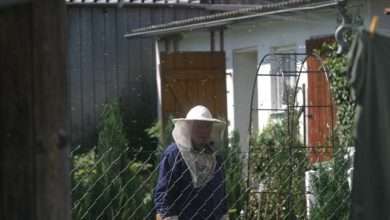How Do Bees Make Honey?
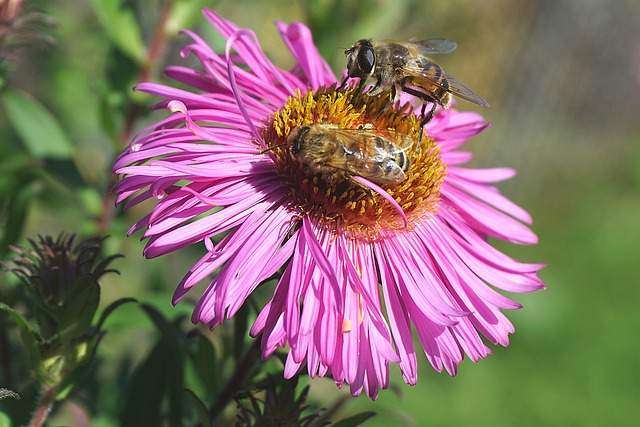
Have you ever wondered how bees make honey? Well, the story of how they accomplished this feat is a good one.
Honey is a sweet substance and it is produced by one special little insect with remarkable ability. Bees are the one special little insect with the remarkable ability to produce this sweet substance.
The key to bees’ survival is their ability to produce this long-lasting food source. Additionally, these hardworking insects’ main source of energy is honey.
Honey bees (Apis mellifera) are the insects that produce this sweet substance and long-lasting food source.
These honey bees are members of the genus “Apis” – the full scientific name is Apis which means bee while mellifera is a Latin word for honey bearing.
A diverse group of insects that includes, bees that nest in cavities, dwarf bees, and giant bees are all part of this scientific specification.
The origin of most of these special little insects is in southeast Asia. All of these insects make honey and they are social insects that live in colonies.
Beekeepers in parts of Asia still manage the Eastern Honey Bee (Apis Cerana).
The European Honey Bee also known as the Western Honey Bee is the most popular.
Further, you can find the Western Honey Bee in many other parts of the world apart from the United States. Within this group of Western Honey Bee that is found in most parts of the world, there exist multiple races or different types.
There are thousands of different types of these insects globally and most are solitary and they do not need to store large amounts of food. Therefore, this sweet treat is not produced by most bee species. True honey producers are insects that belong to the Scientific Genus of Apis. A small amount of a sweet substance is produced by several insect species, but none of them do so in huge quantities.
How Honey is Made by Bees.
There are around 5 steps involved in the honey made by bees and they include:
• Bee workers gather plant nectar.
• The hive is supplied with nectar.
• Bees add enzymes to nectar to make honey.
• Honey’s water content is decreased by evaporation.
• Wax cells with caps are used to keep honey.
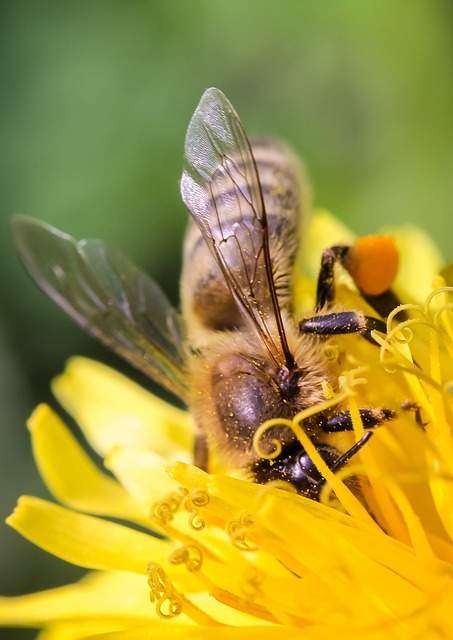
Worker Bees Are the Makers
Production and food gathering in the responsibility of female worker honey bees. Forager bees are what are known as elder adults.
It is a good thing that worker bees are born with this skill and know what to do since they have a short life span.
During the summer the worker bees only live for around 6 weeks. Within this short duration, the worker bees would have to be really good students if each of them had to learn the process of food gathering and production.
During her lifetime, an individual bee makes only a small amount of honey. However, in one day, while foraging, a worker bee may visit up to 5,000 flowers. While on a trip they tend to visit the same type of flower.
The idea of visiting the same type of flower while worker bees are foraging is known as flower fidelity and it is essential in crop pollination.
Despite these bees collecting pollen, they do not use them to make honey. The collection is essential in rearing babies of the young since it is a vital source of protein for bees.
Beekeepers occasionally set up hives in huge fields of a single nectar source, like orange blossoms. We obtain varied sorts and flavors in this way. At least for a while, you will find the foragers concentrating on a single nectar source/
Collecting Nectar
Worker bees have a bee’s honey stomach or crop, which is a special organ that is located in her abdomen directly before her natural stomach. After collecting nectar, these bees use this second stomach to transport the nectar.
While collecting nectar, worker bees suck up the liquid in the plant nectary using their proboscis or tongue to form a straw-like mouth structure. The plant nectary is the part of the plant that produces the sweet nectar that bees collect. The taste of finished is affected by the different flavors that nectar has.
Nectar mixes with enzymes produced by special glands in the mouth or head, in the bee’s crop. The inversion process then begins by breaking down the complex sugars of raw nectar. She will return to the hive with her bounty and give her load to the house bee when her crop is full.
Honey Produced Inside the Hive
The incoming plant nectar from foragers is received by house bees that are not old enough to forage. More enzymes are added as the nectar is passed from bee to house workers.
An enzyme known as Invertase is added as the bees manipulate the watery nectar with their mouth. The pH and chemical composition of the nectar change as the process continues. Along with the saliva, glucose oxidase (another enzyme) is added.
Gluconic acid and hydrogen peroxide are produced as sugar molecules begin to change form and this aids in the honey gaining its acidic and antibacterial properties.
After this, the time for the dehydration process begins. The plant nectar is always watery. The dehydration process helps in removing the excess water on the watery plant nectar.
Water Content Is Decreased-Ripening
A house bee sips from the maturing nectar and discharges a drop onto her mandibles (jaw). (Like when we use bubble gum to blow bubbles.) The moisture content begins to drop as they are exposed to the warm, dry air inside the hive.
Nectar can be poured into droplets and swirled about numerous times while it is drying (or reducing its moisture content). To increase airflow through the hive bees, fan their wings and this helps in lowering the nectar’s water content.
The transformation is considered complete when the moisture content of the honey has dropped to 20% from about 80%. To store food until it is needed or ready for use, beeswax honeycomb cells are used.
To keep the food clean and safe each ripe cell is capped. There are sheets with thousands of hexagon-shaped cells in each bee colony. the stored food will be used in sustaining the colony during the long cold winter months.
- Honey bees make honey from…
Bees use plant nectar as their main food source when making honey. But it’s not the only sweet thing they gather.

They occasionally gather an aphid secretion known as “honeydew,” which is delicious. The finished product is known as “Forest Honey.”
Although the concept might be a little off-putting, it is a highly sought-after product in various nations.
Why Do Bees Make Honey in Abundance?
There is a time when no nectar is available and a colony of bees must make and store food in preparation for this.
Why do they store food inside the hive in such great quantities?
Honey bees do not build seasonal nests that are abandoned once cold arrives unlike many insects
Some colony members spend the entire year within the hive. They are unable to fly and search for food when it becomes cold.
Why not just store the plant nectar in the womb? Watery nectar would go bad, while ripe honey can be kept for several months without going bad. An excellent source of nourishment for these insects with chilled blood.
The food production in a colony may be affected by different factors. An average colony can make 60 pounds or more in a season, in a good foraging location.
Finding Nectar Sources
Almost every member of the colony is involved in food production since it is so important. Everyone else will contribute to the nectar collection with the exception of male bees or drones and queen bees.
During the lifetime of colony workers, they proceed through several jobs. Some of the several jobs that colony workers do include feeding the young, guarding the hive, making wax, and many more.
Further, there are bees within the colony whose duty is to search out food sources for the hive and help in finding new locations during swarm season.
These bees serve as scout bees. Foragers return to the hive and use a special bee dance language to tell their sisters upon finding great field nectar. Although all hives work very hard, some produce more honey than others.
Honey production is not a year-round thing in some regions. Plants in bloom that are providing nectar must be present in the colony. In off-peak hours, the colony might gather a little nectar, but not enough.
Making and storing food for the hive requires the work of thousands of colony members as well as nectar from millions of flowers.
The survival of the colony hinges on having enough food stored before winter. And with any hope, the beekeeper will also receive a portion.
FAQs
1. Is Honey Bee Vomit?
The idea that honey is bees’ vomit is an ugly myth that is not true. The collected nectar is held inside the bee in a special structure known as a crop. Compared to her typical digestive system, it is distinct. She can allow some nectar into her real stomach if she is hungry by opening a special valve.
2. Is Honey Made by Bees’ Poop? Is Honey Actually Bee Poop?
No, honey is mostly made from nectar that honey bees gather while munching on flowers.
3. Why Does Honey Come Out of a Bee?
The nectar, which is taken from various flowers by the bee’s tongue and stored in its crop (the “honey stomach”), is what is utilized to make honey.
Bees have two stomachs instead than just one. There are two stomachs: one for food and one for honey. Bees can virtually quadruple their weight when their honey stomachs are full.
4. Why Don’t All Bees Make Honey?
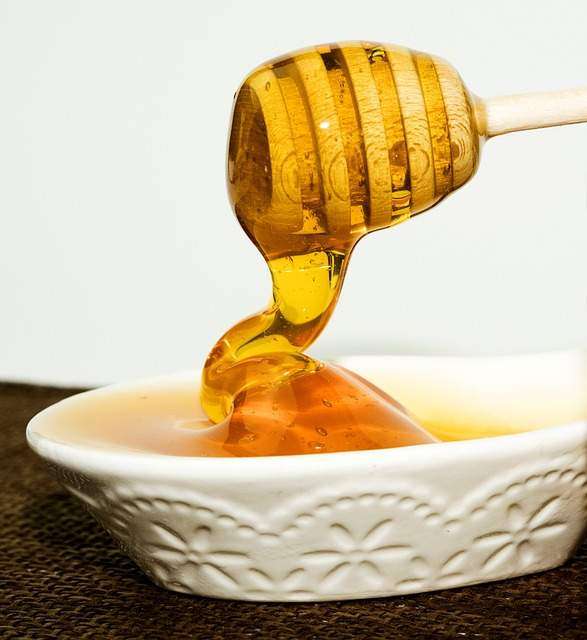
There is no need to store food for bee species that live alone. There aren’t many huge families for these insects to care for. Their only objective is to feed and care for a few young.
Because they do not overwinter in huge groups, it is not required to store a lot of food. Bees are solitary animals for the most part on the planet. As a result, most bees don’t produce honey.
5. Do Wasps Produce Honey?
The wasp is not a bee. even though they may pass for bees to untrained sight. Wasps (and yellow jackets) don’t produce honey, therefore no.
Despite being related to our bees, these insects are primarily carnivorous. Wasps can happily sneak a sample of anything sweet, much like your Mountain Dew at a picnic, but sweet food is not their main source of nutrition.
6. How Much Honey Do Bumble Bees Make?
Food is kept by bumble bees in the nest in little containers known as pots. The amount of honey produced, however, is extremely little because the bumble bee nest is small and does not overwinter as a family.
7. Do Bees Eat Their Honey?
Surprisingly, every kind of bee that produces honey also consumes it. A honeybee is not the only species of bee that produces honey.
There are thousands of distinct species of bees, making them a diverse group. Some of these do produce honey, though not much.
8. Do Bees Get Sad When We Take Their Honey?
If you’ve never kept bees before, you might be wondering if bees get upset if you steal their honey. Unless you are selfish and take too much, harvesting honey does not offend or harm the bees.
When honey is obtained properly, bees are not disturbed. Honest beekeepers always leave the hive with enough honey.


